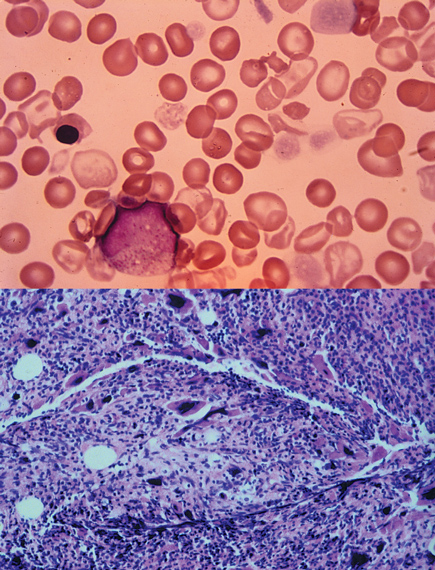Take advantage of ICD-10 codes being delayed once more
Compliance with the switch to ICD-10 diagnosis coding has been delayed to Oct. 1, 2014. The delay will let doctors, software developers and vendors fully test the new coding set in the office setting.
Compliance with the switch to ICD-10 diagnosis coding has been officially delayed one more year to Oct. 1, 2014.
The U.S. Department of Health and Human Services (HHS) published a final rule on Aug. 24 announcing that it would hold off on the previously scheduled compliance date. Earlier in the year, ACP advocated for the delay, recommending that HHS allow at least another year beyond 2013 for physicians, other health care professionals, developers, and vendors to fully develop and integrate the new coding set into their practices and facilities.

In its proposed rule, CMS asked the public to comment on whether the compliance date should be delayed, and if so, for how long. ACP submitted its comments to CMS, first noting the College's standing opposition to the ICD-10 code set implementation, and then its recommendation for a one-year delay.
ACP maintains its concerns about the costs of switching to an entirely new diagnosis system, particularly for the small physician practices that are least able to absorb additional costs. However, the College's comments state, “ACP also understands that if the Department were to rescind the law governing the transition to ICD-10, it would cause great losses to those physicians, medical practices, and facilities that have already expended financial and human resources toward implementing the new, diagnosis code set. ACP agrees that the change in the compliance date for ICD-10, as proposed in the rule, would give clinicians and other covered entities time to prepare and test their systems to ensure a smooth and coordinated transition by all industry segments.”
Despite its continued opposition to the implementation, ACP supports the department's decision to delay the ICD-10 compliance date until Oct. 1, 2014.
CMS received many other comments from the public regarding how the government should handle the code set transition. Appearing in the final rule, many of the comments having great impact are those that reflect on the transition from electronic claims standard version 4010 to version 5010. Since the version 5010 transition is still fresh in memory, sentiments toward the ICD-10 transition will certainly be influenced by that experience.
From the largest parties, hospital systems, health plans and large physician practices, CMS heard about the large investments that had already been made toward ICD-10 compliance, such as spending on new computer systems and adding personnel for the transition. From commenters of all sizes, the agency heard about the ICD-10 project timelines that had been upset by the problems with the version 5010 transition, making it less likely that physicians and other providers could have been ready for ICD-10 by the 2013 deadline.
In addition to delaying implementation, ACP recommended that CMS examine the idea of using Systematized Nomenclature of Medicine–Clinical Terms (SNOMED-CT) as a superior system to ICD-10 for performing and documenting clinical care activities.
The College believes that although it is clear that coding with a classification system such as ICD-10 has benefits for compiling data for secondary purposes, it is generally acknowledged that a reference terminology such as SNOMED-CT is much more effective for accurately capturing the nuances of health conditions and clinical care. ACP suggested that HHS investigate whether ICD-10 codes could be automatically generated from SNOMED-CT terms.
Unfortunately, CMS did not accept this recommendation. The agency cites the considerable financial investments that have been made toward ICD-10 compliance and the projected timelines and uncertainties that would have to be addressed were the agency to forgo using ICD-10 for a different code set.
ACP will continue to inform its members about ways to implement the new code set, through articles, seminars and workshops, and other tools.
The full text of the final rule can be downloaded.
Internists do over half of wellness visits
The initial Annual Wellness Visit (HCPCS code G0438) was provided 1.95 million times in 2011. CMS paid more than $324 million for those visits.
The subsequent or follow-up Annual Wellness Visit (G0439) was provided 342,000 times with a total payment of nearly $38 million.
Both types of wellness visits were provided mainly by four specialties: internal medicine physicians, family physicians, obstetricians/gynecologists and nurse practitioners. Over half the visits were performed by internists.
PCIP bonuses paid out
The Medicare Primary Care Incentive Payment program, as outlined by the Patient Protection and Affordable Care Act, provides a 10% bonus payment, in addition to the usual Medicare fee schedule amount (excluding the patient deductible or copayment portion), for designated primary care services provided by internists, family physicians, geriatricians and pediatricians.
To qualify for the bonus, at least 60% of these physicians' Medicare allowed charges must consist of the designated primary care services (office, nursing facility, domiciliary, and home services). The bonus program took effect on Jan. 1, 2011 and will continue through 2015.
Medicare automatically determines eligible physicians based on claims. The determination as to which physicians qualify is based on the revenue associated with each individual physician during the prior assessment period.
CMS cut checks totaling over $560 million in 2011 to designated primary care specialists. Half of that money went to internists, another 38% went to family physicians, and smaller percentages were sent to nurse practitioners, geriatricians, pediatricians, and physician assistants.




